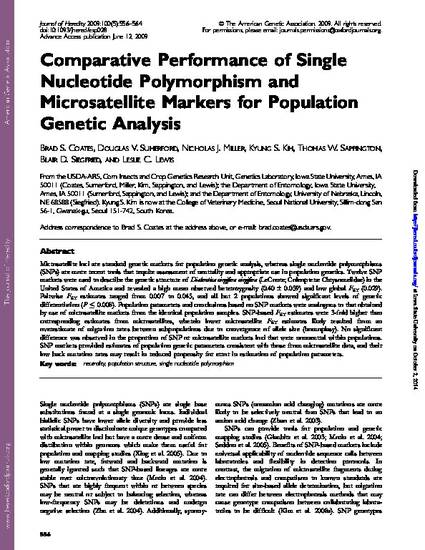
Microsatellite loci are standard genetic markers for population genetic analysis, whereas single nucleotide polymorphisms (SNPs) are more recent tools that require assessment of neutrality and appropriate use in population genetics. Twelve SNP markers were used to describe the genetic structure of Diabrotica virgifera virgifera (LeConte; Coleoptera: Chrysomelidae) in the United States of America and revealed a high mean observed heterozygosity (0.40 ± 0.059) and low global FST (0.029). Pairwise FST estimates ranged from 0.007 to 0.045, and all but 2 populations showed significant levels of genetic differentiation (P ≤ 0.008). Population parameters and conclusions based on SNP markers were analogous to that obtained by use of microsatellite markers from the identical population samples. SNP-based FST estimates were 3-fold higher than corresponding estimates from microsatellites, wherein lower microsatellite FST estimates likely resulted from an overestimate of migration rates between subpopulations due to convergence of allele size (homoplasy). No significant difference was observed in the proportion of SNP or microsatellite markers loci that were nonneutral within populations. SNP markers provided estimates of population genetic parameters consistent with those from microsatellite data, and their low back mutation rates may result in reduced propensity for error in estimation of population parameters.
Available at: http://works.bepress.com/thomas_sappington/32/

This article is from Journal of Heredity 100 (2009): 556, doi:10.1093/jhered/esp028